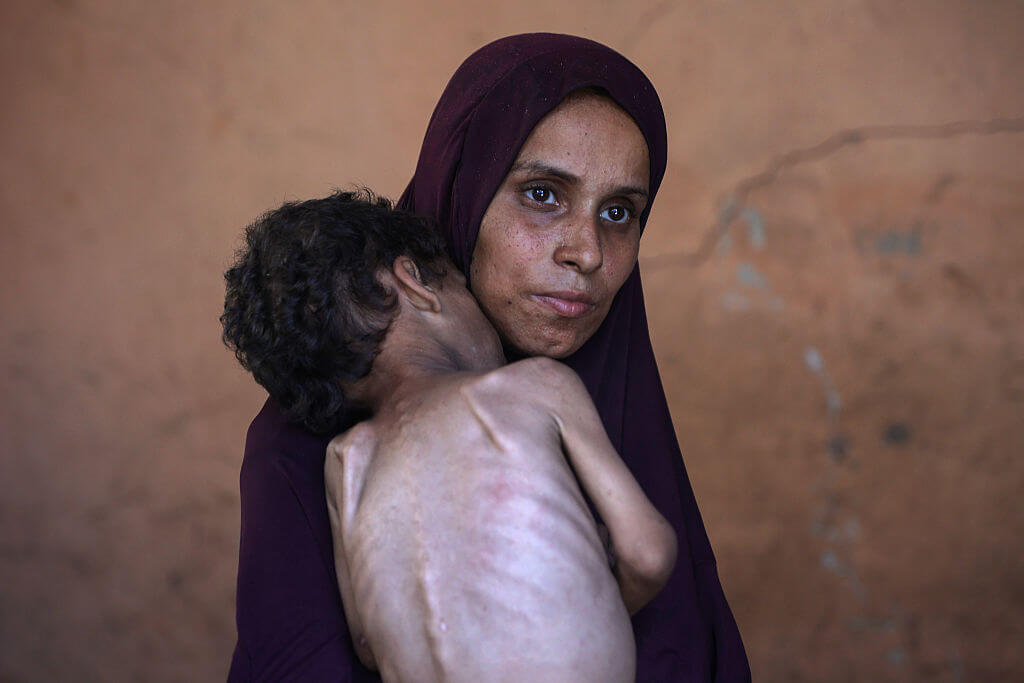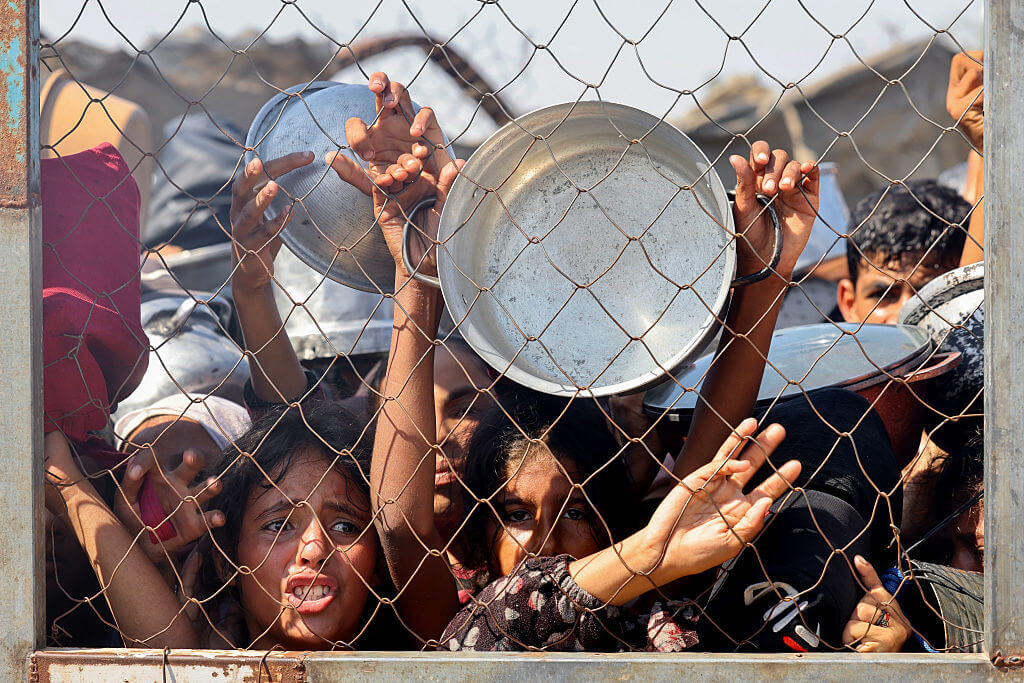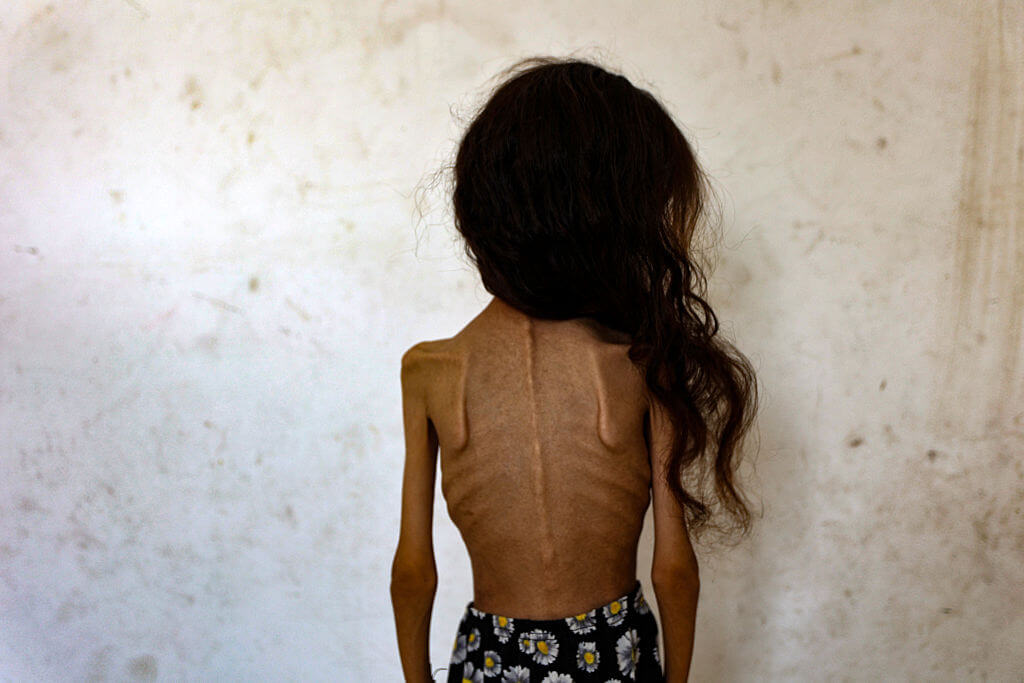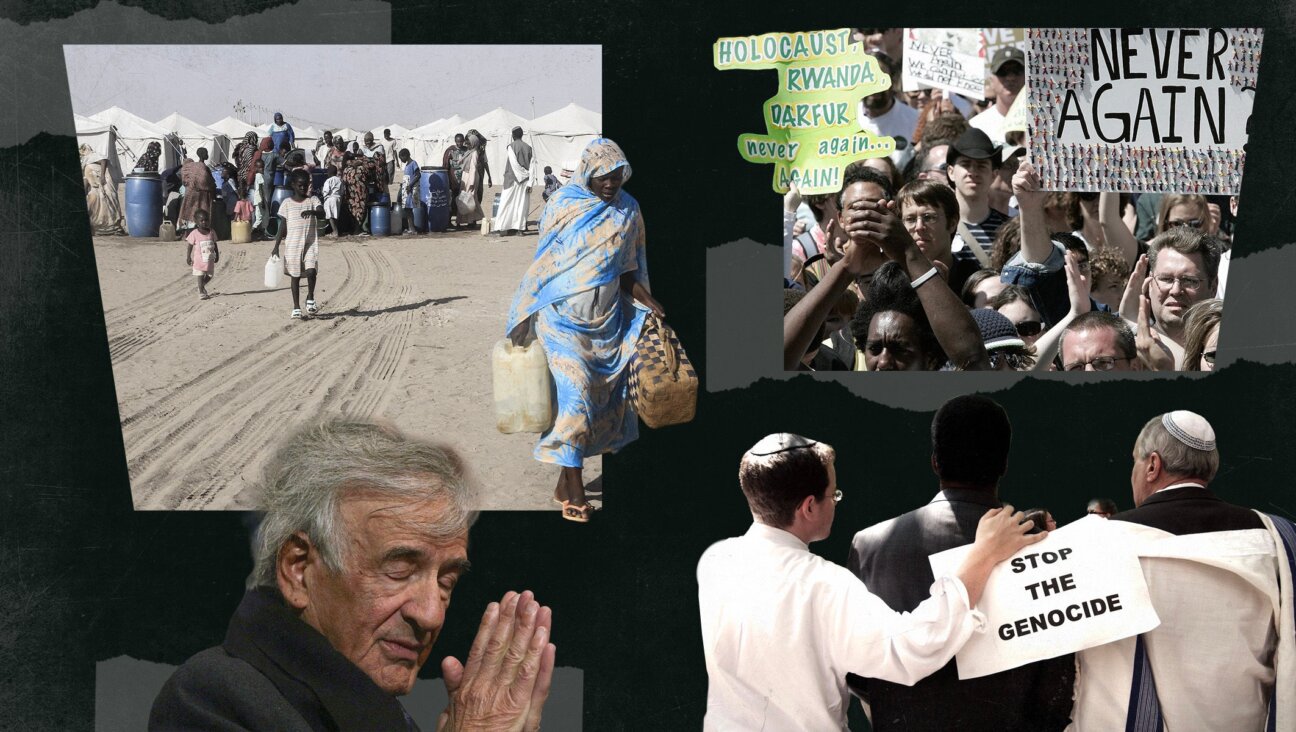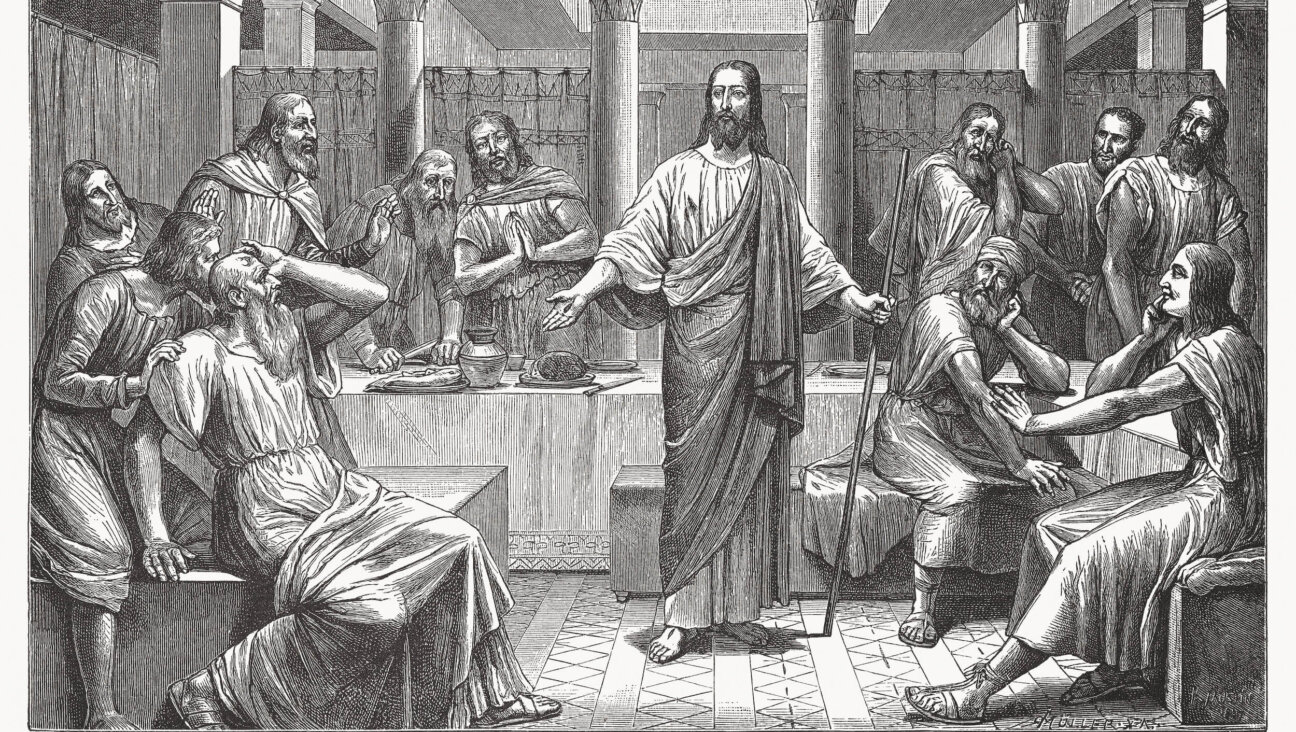‘You can’t fake it’: Why images of starving children in Gaza are so difficult to dismiss
Photojournalist Lynsey Addario has seen how powerful images can ‘move the dial’
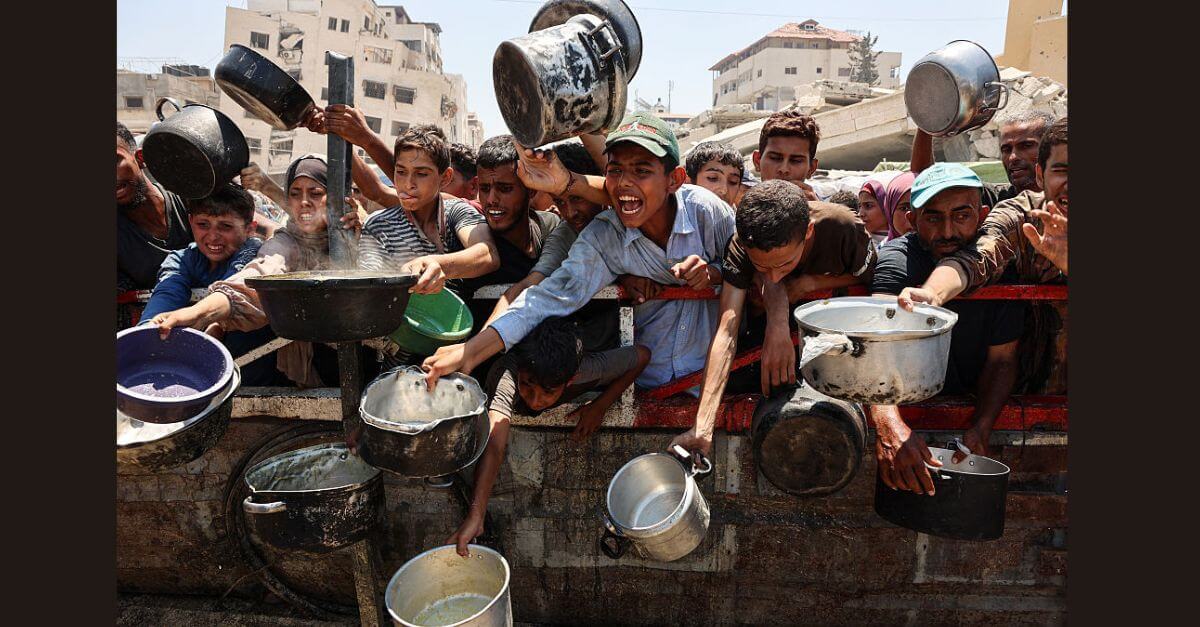
Palestinians crowd at a lentil soup distribution point in Gaza City. Photo by Omar Al-Qataa / AFP via Getty Images
Haunting images of malnourished children in Gaza have spurred even staunch pro-Israel voices to call for the urgent distribution of food.
The intensification of international and domestic pressure on Israel’s government is due in part, experts say, to the undeniable power of images — capturing suffering in a way that words alone rarely can.
Under intense international pressure, Israel last week lifted a ban on international air drops of aid that had lasted for almost nine months, and major U.S. allies said they will now recognize a Palestinian state.
Meanwhile, video released by Hamas showing 24-year-old Israeli hostage Evyatar David appearing severely emaciated has prompted renewed calls in Israel for a ceasefire that would secure the release of the remaining hostages.
“Gaza may well be approaching a real hunger crisis. Shocked to be reading this from me? I don’t blame you,” the Israeli journalist Amit Segal, a prominent defender of Netanyahu’s government, posted to X, citing the high price of flour.
President Donald Trump has acknowledged the suffering. “Some of those kids are — that’s real starvation stuff. I see it, and you can’t fake it,” Trump said last week — contradicting Israeli Prime Minister Benjamin Netanyahu’s claim that “there is no starvation in Gaza.”
‘The archetypical innocents’
Photographs of children in particular tend to evoke strong public reactions. In Gaza, some of the most searing images have included young kids — a malnourished infant in the hospital; a mother cradling her emaciated 2-year-old son; children with desperate expressions pressed against a fence, reaching for a hot meal.
Pulitzer Prize–winning photojournalist Lynsey Addario has covered too many conflicts and humanitarian crises to list, including acute food insecurity in South Sudan, Yemen, Darfur, and the Democratic Republic of Congo. She’s also seen firsthand how such images can spur governments to act.
“Sometimes it takes images of women and children who are obviously innocent bystanders of war to move the dial,” she said. “We as a society are inured to images of violence because we see it so often. But when you see a starving child in 2025, and we understand the plenty in our world and the fact that it is preventable, it is pretty devastating.”
Children are in many ways “the archetypical innocents,” said Julian Stallabrass, an art historian and author of the book Killing for Show: Photography, War, and the Media in Vietnam and Iraq. “In previous conflicts, it’s the photographs of the death or the mistreatment of children which have particularly struck home.”
During the Vietnam War, the searing photograph of a naked 9-year-old girl fleeing a napalm attack became a powerful symbol of the war’s brutality and helped intensify anti-war sentiment. (While there has been recent debate over who took the iconic photo, known as “the Napalm Girl,” the enduring significance of the image remains.)
Photos of starving Biafran children during the Nigerian Civil War in 1967 raised awareness of the crisis, prompting interventions by Israel among other countries, and helped inspire the creation of Doctors Without Borders. The photo of a firefighter gazing at the dead child he cradled after the 1995 terrorist attack on a federal building in Oklahoma City won a Pulitzer Prize.
During the Syrian refugee crisis in 2015, a photo of a Turkish paramilitary police officer carrying the body of 3-year-old Alan Kurdi, who had washed ashore after drowning during an attempt to reach Europe, prompted record donations to refugee aid organizations.
David Hume Kennerly, the official White House photographer for President Gerald Ford and winner of the 1972 Pulitzer Prize in Journalism for Feature Photography, said he’s not sure if photographs alone change public opinion — but they do “stick in your psyche.” In 1976, Kennerly won the World Press Photo contest “People in the News” category for a photo of a young Cambodian refugee with tears streaming down her face. Her youth is one of the reasons the photo resonated, he said.
Now, in Gaza, he believes haunting images of malnourished children and clamoring crowds at aid distribution sites may have similar staying power.
“Numbers don’t mean anything to people, but when you zero down on a specific person or kid, that has impact,” he said. “You can relate to it as a human, as a parent.”
-
Naeema, a 30-year-old Palestinian mother, carries her malnourished 2-year-old son Yazan as they stand in their damaged home in the Al-Shati refugee camp.
Photo by Omar Al-Qataa / AFP via Getty Images
-
Palestinians, mostly children, push to receive a hot meal at a charity kitchen in the Mawasi area of Khan Yunis in the southern Gaza Strip.
Photo by AFP via Getty Images
-
Yazan, a malnourished 2-year-old Palestinian boy, sit with his brothers at their family’s damaged home in the Al-Shati refugee camp, west of Gaza City.
Photo by Omar Al-Qattaa / AFP via Getty Images
-
Nine-year-old malnourished Palestinian girl Mariam Dawwas stands against a wall in the Rimal neighbourhood in Gaza City.
Photo by Omar Al-Qataa / AFP via Getty Images
‘Terrified of the power of images’
One way to understand the power of images, Addario said, is by observing the efforts made to discredit or suppress them.
Israel hasn’t allowed foreign journalists independent access to Gaza since the start of the conflict, claiming they would be at risk, although journalists routinely assume risks when covering conflicts. The flow of images has instead come primarily from people already inside Gaza, many of whom have personal ties to the conflict and may be displaced and hungry themselves.
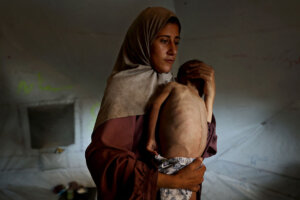
At the same time, the Israeli government has, without evidence, accused freelance photographers of collaborating with Hamas and having prior knowledge of the Oct. 7 attacks. These claims were first amplified by the pro-Israel media watchdog HonestReporting, which, when pressed to substantiate the allegations, said it was merely “raising questions.”
Allegations of media bias escalated further last week after public outcry over a photo prominently featured in the New York Times story, “Gazans Are Dying of Starvation.” The image — showing a mother cradling her gaunt 18-month-old son — was later updated to include that the child had preexisting health issues affecting his muscular development, in addition to suffering from malnutrition. The Times maintained the broader thrust of the article: that starvation is a growing threat to civilians in Gaza.
“That seemed to touch a nerve,” Kennerly said. “The more shocking the nerve is touched, the more the people complain about how that is not a representative photo.”
Addario stressed the importance of providing full context with photographs. But, she said, the boy’s underlying condition does not negate that he was malnourished, and a single photo does not discredit wider starvation in Gaza.
Another controversy erupted after German media outlets Süddeutsche Zeitung and BILD accused Anas Zayed Fteiha, a freelancer for the state-run Turkish news agency Anadolu, of staging “Hamas propaganda” by only publishing photos of the queues prior to food distribution, without showing those who received food shortly after. Others alleged the photos weren’t taken at food distribution sites, though video from the scene shows food being distributed. Fteiha has denied that the photos were staged or directed.
Addario questioned why if the reporters in Gaza are biased as the Israeli government alleges, independent foreign journalists have not been allowed on the ground to report.
“People are terrified of the power of images,” Addario said. “That is the reason why you prevent photographers and international media from entering a place.”
Photos, she said, can transcend languages, cultures, and education levels to humanize distant suffering.
Illustrative of that power: BBC reporter Jeremy Bowen was recently aboard a Jordanian military plane dropping humanitarian aid into Gaza. While he was permitted to describe what he witnessed, Israel did not allow him to film or photograph what he saw.
“That fact alone speaks to the power of images,” Addario said.
This article has been updated with additional information about Anas Zayed Fteiha’s photos.
Correction: Kennerly won the World Press Photo contest in 1976 for the photo of the young Cambodian refugee, not the Pulitzer, which he won for a separate portfolio of images in 1972.

